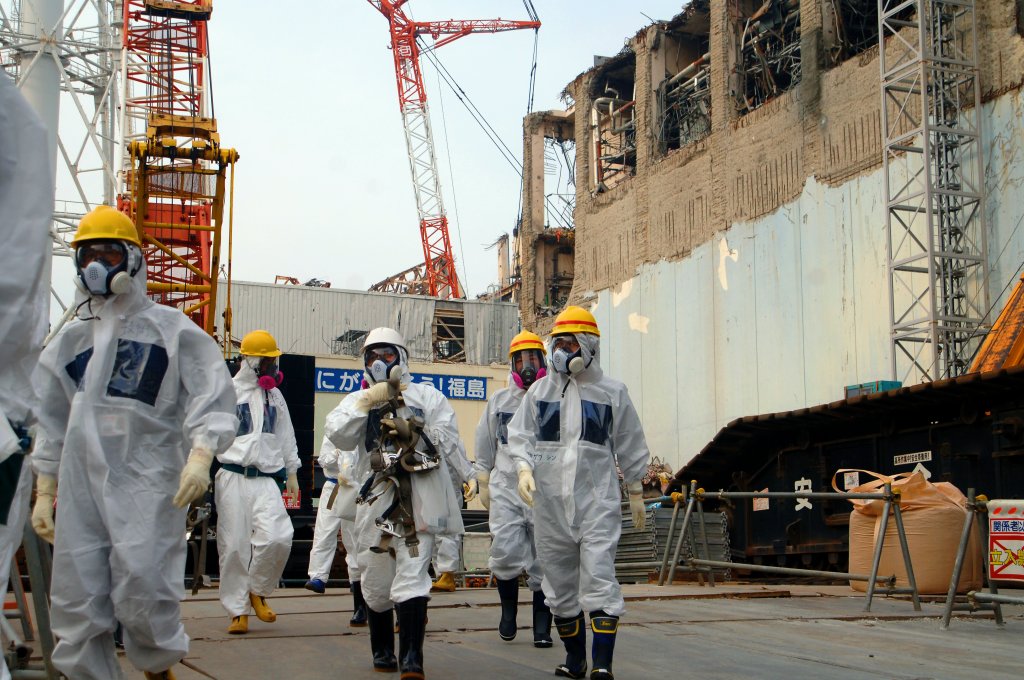The 2011 Fukushima Daiichi nuclear disaster in Japan was classified as a level-7 international nuclear event. The disaster disrupted lives and livelihoods; yet, it is but one of many predicted to occur based on the frequency of past nuclear failures. [i] [ii] However, despite its fundamental riskiness, nuclear energy remains tied to national security and the welfare of the population in governmental and corporate policies and material assemblages in Japan and elsewhere.

I couldn’t help but wonder: What must disappear symbolically for nuclear to be so secure? On the one hand, what must disappear is the possibility for cascading technological failures. This is disappearance is accomplished by a governmental logic described as “command and control,” with military-industrial roots, as described by Eric Schlosser. On the other hand, what must disappear is the danger from radiation. Analysis of “nuclear assemblages,” as described by Gabrielle Hecht, discloses that what disappears from the construct of nuclear security is the danger from radioactive contamination up and down supply-and-utilization-chains.
Making the danger of radioactive contamination disappear is quite a trick. Remember that radiation birthed Godzilla in the original film adaptation. However, although the global public distrusts radiation, it has been conditioned by decades of protocols and risk narratives to believe that exposure can be expertly represented and administered, with biological effects governable. Radiation danger is domesticated by radiation risk management, a body of knowledge that was professionalized with “Health Physics,” whose origins can be traced to the US Manhattan Project. The governability of radiation exposure is illustrated by the multiplicity of symbolic systems for representing physical and biological properties, illustrated by the sievert, a unit of measurement claiming to capture precisely the biological impacts of a given (singular or cumulative) exposure.
In Japan, as in most nations, the government has the authority to decide what level of radiation exposure is permissible, although citizen activism has driven down national exposure levels over time. In contrast to this trend, after the Fukushima disaster, citizen and worker radiation exposure levels were increased dramatically, leading to fierce objections to the new permissible dose levels. Concerns about radiation exposure have been amplified by increased incidents of diabetes and thyroid nodules and cancers among Fukushima children. Conflict has raged about whether radiation is responsible. Radiation become dangerous as expert formulations of risk are seen as incongruous with experienced effects.
“the analytical concept of nuclear governmentality explain how nuclear and radiation risks and uncertainties are produced”
Representations
of radiation forms and biological effects are inherently political because each
system for representing radiation and effects is based in assumptions about physical
forms, types of exposure, and range of posited biological effects, with
uncertainties and conflicts in expert interpretations. These conflicts are
revived after every nuclear accident and radiation mishap, with reassurances
given by authorities that risk is governable and public welfare carefully
administered. Increased disease incidents in Japanese children have mobilized
parents, researchers, and outside observers to challenge the narrative of
carefully administered exposures. My paper in Security Dialogue
introduces the analytical concept of nuclear governmentality to explain how
nuclear and radiation risks and uncertainties are produced, but rendered
actionable through technocratic controls and precise calculations of
dose-effects, generating resistance from dissident experts and citizens whose
experiences belie the control narrative.
The full length article providing the basis for this blog post was published in Security Dialogue 50(6) 2019
[i] J. Lelieveld, D. Kunkel, M. G. Lawrence. Global risk of radioactive fallout after major nuclear reactor accidents. Atmospheric Chemistry and Physics, 2012; 12 (9): 4245 DOI: 10.5194/acp-12-4245-2012
[ii] Spencer Wheatley, Benjamin Sovacool, and Didier Sornette, “Of Disasters and Dragon Kings: A Statistical Analysis of Nuclear Power Incidents & Accidents,” Physics and Society (2015) arXiv:1504.02380 [physics.soc-ph].